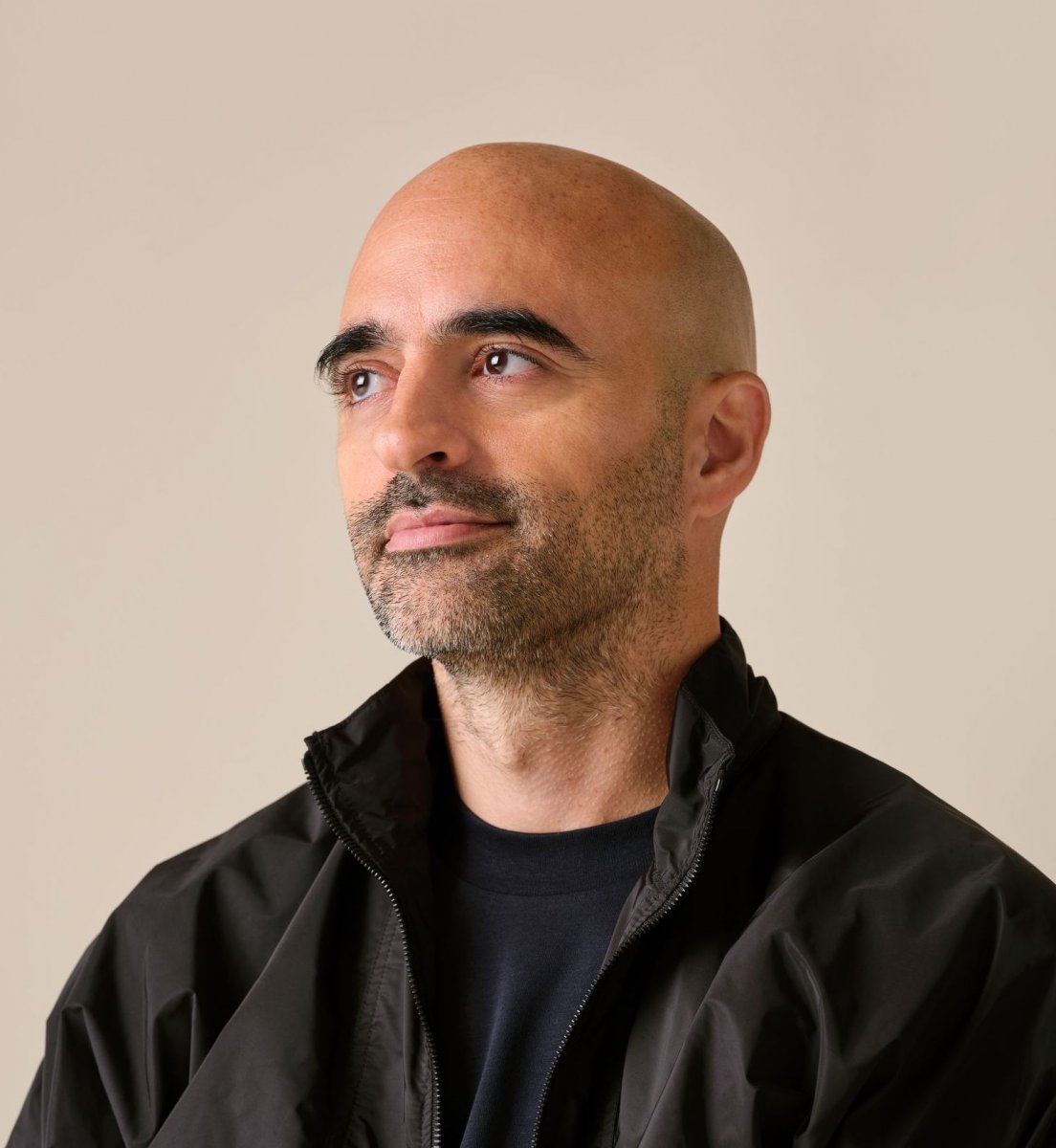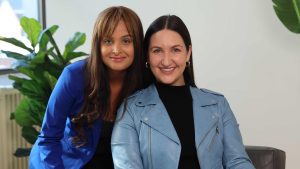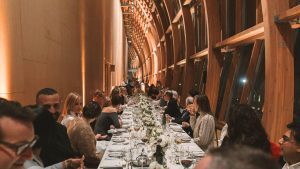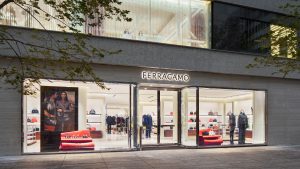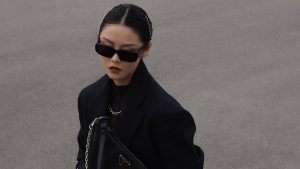In June of 2021, SSENSE announced an undisclosed minority investment from Sequoia Capital China, which gave the global technology platform a valuation of over $5 billion. It was the privately-held retailer’s first round of external funding, and a resounding vote of confidence in the Montreal-based company’s influential role in the fashion, tech, and luxury e-commerce space.
“From the very early days, we knew that the business had the potential to be quite big in scale, but I don’t think we expected it to be where we are today, where the targets kept on moving as we [reach] new milestones,” says CEO and co-founder, Rami Atallah.
Atallah and his brothers, Firas and Bassel, founded SSENSE in 2003, opening a store in Montreal the following year and launching ssense.com in 2006. “At that time, we were in our early twenties and we felt that there was no platform that was addressing the needs of the new generation of consumers,” says Atallah. “What we set out to do is build a platform that was interesting, that was pushing boundaries, and that leveraged the internet to reach customers globally.”
Until they started turning a profit and could afford to hire employees, the brothers—who were still in school when they started the business—did everything themselves in the early years. “ [It’s] made us financially responsible and allowed us to run a business that was sustainable and profitable from day one,” says Atallah. In fact, the SSENSE platform got its start as part of Atallah’s computer engineering thesis at Polytechnique Montreal. “At that time, there was no out-of-the-box solutions that allowed you to easily put up a website, so I had to learn how to set up a server, I had to learn PHP, HTML, CSS. I learned Adobe Photoshop for the design of the website,” he says.
Today, the company carries 1,600 brands ranging from Gucci to Outdoor Voices, employs over 1,750 people in permanent positions, has 1.9 million followers across Instagram, Twitter, and Facebook, and boasts over 100 million page views on ssense.com monthly. SSENSE introduced an Everything Else section offering homewares, electronics, and more in 2020, and started carrying designer kidswear last year. There’s also a popular shopping app, created in-house, that uses the company’s proprietary algorithms and recommendation models to encourage product discovery and, of course, sales.
Homegrown Talent
Remarkably, the nineteen-year-old retailer has managed to grow to its current scale—with a European distribution center in Tessenderlo, Belgium, and websites in French, simplified Chinese, Japanese, and Korean—while remaining well rooted in its hometown, building a 13,000 square-foot SSENSE Montreal flagship store, a 750,000 square-foot Fulfillment Center, and running a 115,000 square-foot office and photo studio space on Rue Chabanel Ouest.
“One of the things that Canada has allowed us to do is to be far from the fashion circles, and that’s allowed us to not be overly biased by the industry,” says Atallah. “As a result, SSENSE has a very distinctive feel versus what other retail platforms look and feel like—in my opinion, Canada has allowed us that luxury.” The company currently has teams in New York, Dallas, Toronto, Vancouver, Tessenderlo, and London, England, “despite the fact that Montreal is and will remain our base,” says Atallah, pointing out the city’s “reasonable” cost of living and how Canada is home to workers who are immigrants who can bring “diversity of thought and…new perspectives.”
An Engineering Mindset
From the start, Atallah and his brothers have done things their own way, investing in technology and embracing data- and solutions-driven decision-making. “Engineering is a problem-solving mindset,” says Atallah. “And we use the first principle approach a lot in the business, which is breaking down each problem into its smallest parts, questioning everything and identifying what the optimal solution [is] based on the series of inputs that you’re given to solve the problem.” This approach, he says, has helped SSENSE land on breakthrough solutions for its business, whether it’s in creating retail experiences or the UX of the company’s website and mobile app, which are “very distinctive from what you see elsewhere in the market.”
An iterative mindset is also important at SSENSE. “We build a minimum viable product, we iterate, we scale as we see results,” explains Atallah. “It allows us to make sure that whatever we’re building is actually useful for the end consumer, instead of building the entire solution with all the bells and whistles and investing a lot of money only to figure out that actually the solution is not the right one.” SSENSE Montreal, for example, was designed by renowned firm David Chipperfield Architects to be modular; it can be configured for private shopping appointments and immersive, in-person events. “That space, we could adapt it in any way based on the needs of the business,” says Atallah.
Technology Leadership
Importantly, the company sees itself not just as a fashion brand or retailer. “We are a technology, as well as a fashion and cultural platform,” says Atallah. “[It’s] being at the cutting edge of both of those areas that makes the strength and the distinctiveness of SSENSE.”
From its order management system to a merchandise planning tool, SSENSE builds and controls its own technology solutions. “Technology is the backbone of our business, and building proprietary technology was very important as we started…we had no other choice. More importantly, it was essential to be in control of our destiny,” says Atallah. “We’re not relying on third-party platforms for our business to run.”
Its technology platform also allows SSENSE to collect valuable data on business trends and customer behaviour. “Today, we process tens of thousands of transactions a day,” says Atallah. “We have a lot of data …[and] over time, we’ve built a really good understanding of how each part of the offer influences customer demand.”
The SSENSE Perspective
A strong point of view and a willingness to experiment have been key for SSENSE from day one. In that spirit, the brand created what it describes as “the world’s first shoppable music video” in 2012, launched a print magazine in 2019, and developed SSENSE Works in 2020 to connect “with cross-disciplinary creatives to design and develop collaborative products, content, and new narratives.” “Commerce used to happen in stores and it moved online, then in mobile,” says Atallah. “It’s happening on chat and SMS today, it’s happening in the metaverse…it will continue to evolve and be more and more embedded into our day-to-day lives.”
The platform has also long made it a priority to identify and champion emerging brands like Jacquemus, Marine Serre and Fear of God, introducing them to new audiences and alongside established luxury labels like Balenciaga and Valentino. “The thing I’m really proud of is that we’ve really been able to contribute and support a lot of designers,” says Atallah. “SSENSE today is known as a springboard for talent, and it’s a stamp of approval for emerging creators.”
More recently, SSENSE has also worked with celebrities like Pharrell and Justin Bieber to market and retail their brands online globally, and collaborated with brands like Burberry to create capsule collections and immersive in-store and online experiences. Through its new Everything Else department, SSENSE is able to expand significantly beyond the fashion space, offering everything from Japanese ceramics to gaming laptops to its international clientele.
“It’s about continuing to identify those creatives that are challenging our perception of the world and are influencing contemporary culture,” says Atallah. “[And] continuing to strengthen our platform to identify those talents, and allow them to scale and reach our global audience.”


